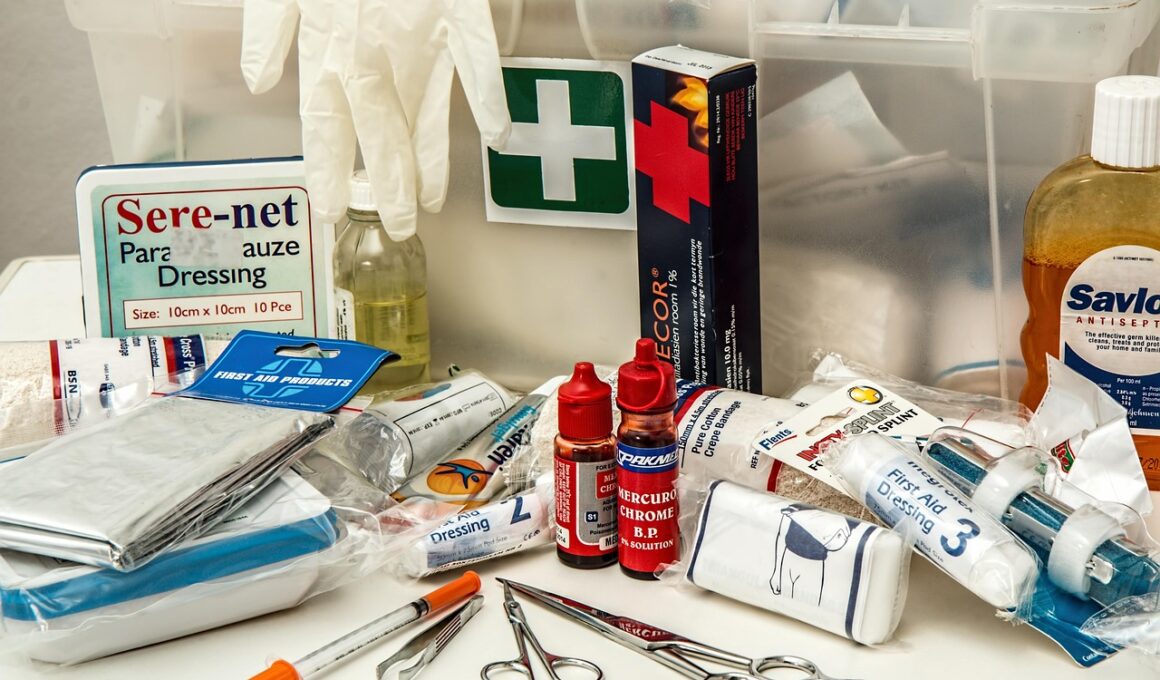Using a Cat First Aid Manual to Identify When to Seek Emergency Vet Care
When it comes to the health and well-being of your cat, knowledge is vital. A Cat First Aid Manual serves as an essential tool for pet owners. It provides valuable insights into common feline ailments, preventive care, and emergency procedures. Knowing how to utilize such a manual can enhance your ability to respond effectively during a pet health crisis. This can mean the difference between a quick recovery and a prolonged issue. Specifically, understanding symptoms and basic first aid practices can empower you as a cat owner. Pay attention to the manual’s guidance on recognizing distress in your cat. It mentions critical signs, including prolonged vomiting, difficulty breathing, and sudden changes in behavior. Each section of the manual typically covers specific emergencies and their respective responses. Reading the manual beforehand allows for quick actions during actual emergencies. Thus, it becomes easier to identify potentially serious situations. Always keep this resource handy. Ensure you’re familiar with the layout. This familiarity will jumpstart your response when time is of the essence.
If you wish to be thoroughly prepared, familiarizing yourself with the sections of your Cat First Aid Manual is essential. Start by bookmarking vital pages that cover emergencies most likely to occur with your feline friend. For instance, cut injuries, poisonings, or severe allergic reactions rank high on the list. Keeping a list of emergency contact numbers alongside these bookmarks can also prove incredibly useful. This list should include your regular veterinarian’s number, local emergency vet clinics, and even animal poison control hotlines. During a crisis, it may be too late to look for essential phone numbers that could save your pet. The manual should reinforce your understanding of first aid principles, such as CPR and wound care. Completing a first aid course specifically designed for pets enhances this knowledge. Such training can be invaluable if an emergency arises. Connecting with a local animal welfare group to find classes might also be beneficial. Engaging with fellow cat owners can provide additional support, as sharing experiences often leads to greater preparedness.
Recognizing Symptoms and When to Act
Your Cat First Aid Manual can be instrumental in helping you recognize symptoms that require immediate attention. Monitoring your cat’s routine and behavior is crucial for understanding when something is amiss. You should look out for symptoms such as lethargy, hiding, or failure to eat. These signs may seem subtle, but they often indicate underlying health issues that need addressing. Rapid breathing or unusual vocalization can signal pain or distress, warranting prompt action. The manual will inform you when a situation becomes critical. Moments requiring immediate veterinary care include severe bleeding, broken bones, or signs of heatstroke. Knowing these potential emergencies beforehand simplifies decision-making when panic sets in. Your calm demeanor will set the tone for your cat, who can sense your anxiety. Practicing what to do next, as outlined in the manual, will help ensure you act decisively. Similarly, it minimizes the risk of second-guessing yourself. Knowing when to act is half the battle and significantly contributes to your cat’s health.
Prepare yourself mentally and emotionally by familiarizing yourself with the protocols outlined in your Cat First Aid Manual. Much of this preparation involves understanding the common ailments and dealing with potential crises. If your feline companion has a known pre-existing condition, like diabetes or heart disease, knowing how to respond appropriately is crucial as per your manual. Create specific action plans tailored to such conditions in advance. Consider situations where your cat may require insulin administration or if they faint due to their heart condition. The manual supports your efforts by helping you compile a kit of essential supplies. This kit should include items like gauze, bandages, antiseptic solutions, and a muzzle to protect yourself when providing assistance to an injured or scared cat. Check expiration dates often and replenish your kit as necessary. This proactive approach ensures that you can respond immediately rather than scrambling for supplies when a crisis occurs. Periodically reviewing and updating your first aid knowledge keeps you and your cat safe.
Utilizing Resources Effectively
While the Cat First Aid Manual is a vital tool, consider supplementing it with additional resources for even greater expertise. Use online platforms that focus on feline health. Websites from veterinary organizations provide updated information about common cat emergencies and treatment protocols. Join forums or social media groups focused on pet care to connect with other cat owners. Sharing experiences can enhance your knowledge and comfort level in handling crises. These online resources often feature videos demonstrating first aid techniques, allowing for visual learning. However, always cross-reference information to ensure accuracy and reliability. Trust only reputable sources that align with veterinary standards. Never hesitate to consult or collaborate directly with a veterinarian if an emergency arises or if you simply want to be informed. Building a strong relationship with your vet can also impart confidence when handling such situations. Keep a notebook to jot down insights and accumulate valuable lessons learned from fellow cat enthusiasts. Various perspectives will significantly enrich your overall understanding.
Post-Emergency Care
The Cat First Aid Manual not only assists in emergencies but also emphasizes the importance of post-emergency care. Once the initial crisis is resolved, securing follow-up veterinary care is essential. This step ensures that any underlying health issues are addressed effectively. Post-emergency care might involve medication, observation, or specific dietary requirements indicated by a vet. The manual will guide you through immediate aftercare, helping you understand what to monitor in your cat during recovery. Familiarize yourself with signs of complications to catch them early. Encourage adequate hydration, rest, and nutritional support as prescribed. Your cat might exhibit anxiety or reluctance to engage post-crisis, and it’s crucial to provide a safe and comforting environment. Finally, reflect on the incident to identify learnings that may be applied in the future. Updating your knowledge based on what transpired ensures you remain one step ahead. This process allows you to reinforce your preparedness and, ultimately, enhance the bond with your feline companion.
In conclusion, having access to a well-structured Cat First Aid Manual equips you to handle emergencies proactively. Remember to familiarize yourself with its contents and act decisively when needed. Your preparedness can significantly impact your cat’s recovery and health outcomes. Engaging in continued education around feline first aid practices will further bolster your confidence. Participate in community discussions and training to enhance your understanding continually. Most importantly, staying calm in emergencies and applying knowledge effectively can ensure that your beloved pet receives the best possible care. With increased familiarity and practice, you’ll develop the necessary skills to act in emergencies. Your proactive approach pays off when it comes to your pet’s well-being. Take the time to invest in this knowledge, as your cat relies on you in moments of distress. Be the advocate your furry friend needs and potentially save their life. Always prioritize learning and sharing experiences to strengthen your support network among fellow cat owners. After all, a well-prepared owner can be a cat’s best friend.
Taking the initiative to prepare yourself with the knowledge in a Cat First Aid Manual is a responsibility that comes with pet ownership. This preparation ensures that you will respond effectively if your cat ever experiences an emergency. Ability to act swiftly and knowledgeably brings peace of mind to you as an owner. When you avoid panic, it allows you to focus on the essential steps required for your cat’s care. Becoming proficient in recognizing symptoms and implementing first aid techniques reduces the chances of further complications. You can create a routine of reference, practice, and communication to cultivate a deeper understanding of your pet’s health. By discussing these aspects with friends, family, and or your local vet, you can create a supportive network designed for improving pet care. This kind of conversing will not only allow you to expand your knowledge but also enhance the overall care framework for your pet. Whether you find yourself in a mundane pet health scenario or an emergency, the principles outlined in your manual will remain relevant. Ultimately, being proactive keeps your furry friend healthier and contributes to their happiness.


